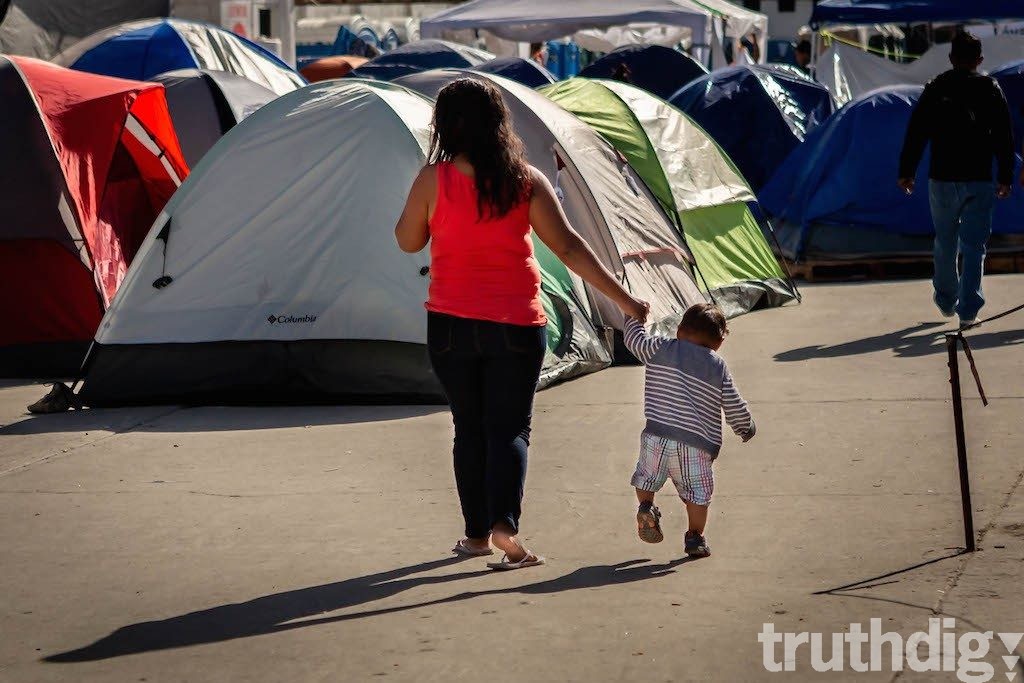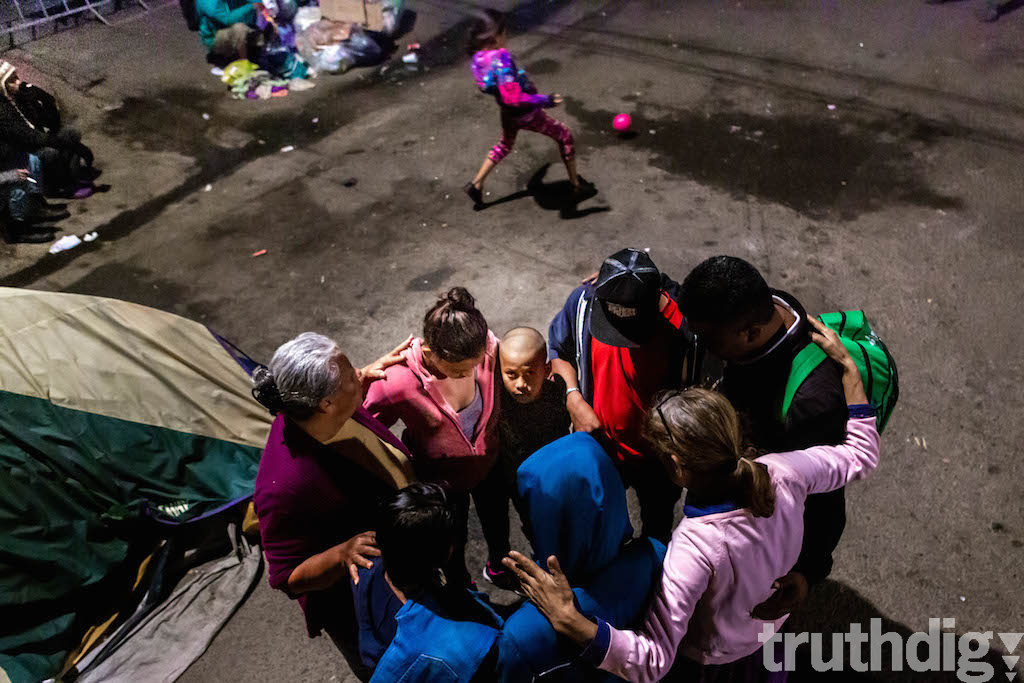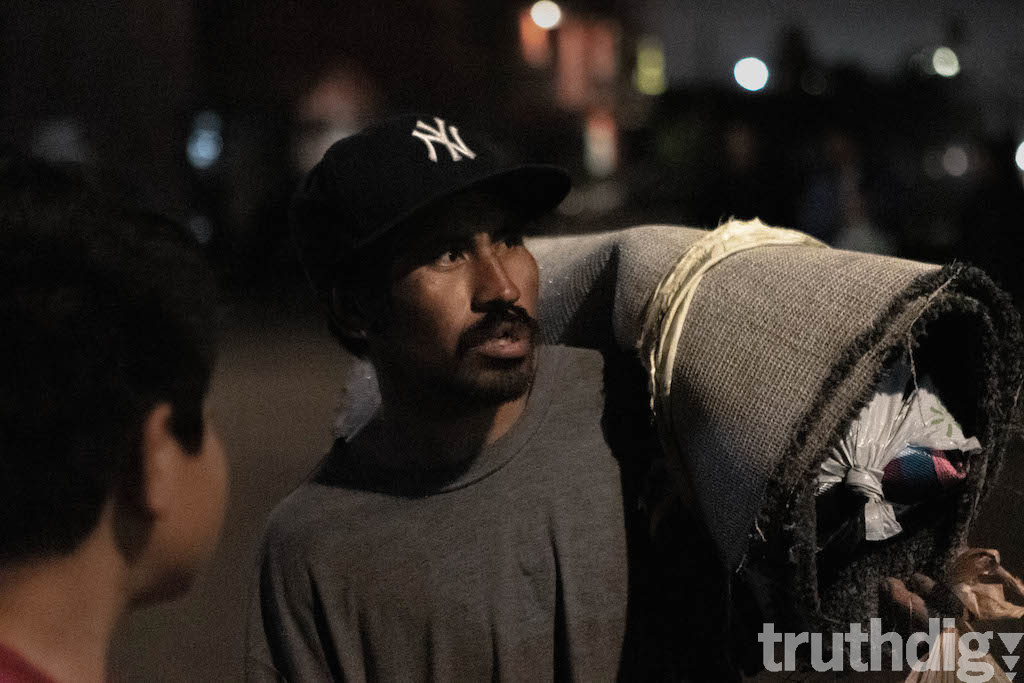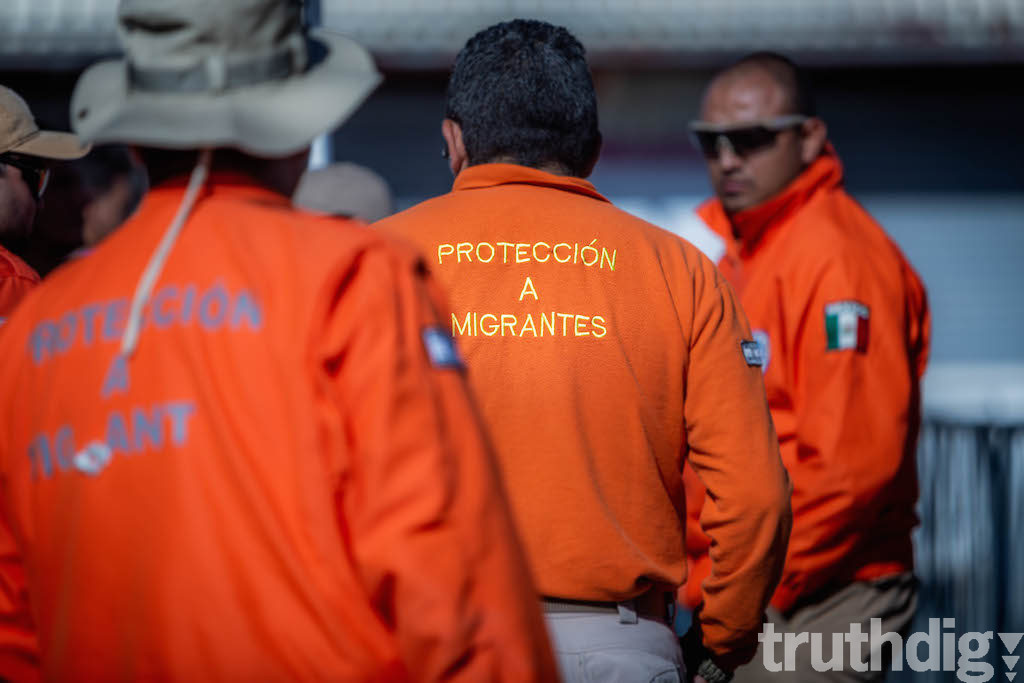
Migrants Spend Their Holidays in Limbo at the U.S.-Mexico Border (Photo Essay)
Michael Nigro / Truthdig December 24, 2018 22 photos-

An orange menace. Miles of fencing and walls are already in place at the border. (Michael Nigro / Truthdig)
-

One of the first camps is set up in the heart of Tijuana at the Benito Juárez Sports Complex. After a torrential rain swamped the grounds and the surrounding area, more than 3,000 migrants were taken by bus 30 miles southeast. The week I arrived, 700 were moved into a nearby warehouse, while the others chose to stay in tents. (Michael Nigro / Truthdig)
-

Many tents were at capacity. One large tent held three families with small children. (Michael Nigro / Truthdig)
-

Playing alone and praying together. (Michael Nigro / Truthdig)
-

A Honduran asylum seeker enters the Benito Juárez camp with all of his belongings. (Michael Nigro / Truthdig)
-

Dinner is served inside a shell of a warehouse that has no heat and little electricity. (Michael Nigro / Truthdig)
-

Policiá Federales have a strong presence at the camp. Here, they are taking away a mattress that an asylum seeker attempted to bring in. (Michael Nigro / Truthdig)
-

Cooking a meal on the streets, which is in a neighborhood with homes, businesses and churches. (Michael Nigro / Truthdig)
-

Dozens of nongovernmental organizations have been donating time, goods and services to the asylum seekers. Here a woman receives a care package with basic necessities, including toothpaste and hygiene products. (Michael Nigro / Truthdig)
-

A view into the United States. (Michael Nigro / Truthdig)
-

Various law enforcement agencies patrol the larger migrant camp at El Barretal, which is about 30 miles south of Tijuana. The space had once been used for large sporting and music events. (Michael Nigro / Truthdig)
-

A Mexican protection force overseas the other nongovernmental organizations, which have come from all over the world to try to help. (Michael Nigro / Truthdig)
-

Inside El Barretal there are various stations for haircuts. Play areas, legal help stations and small-street vendors have popped up as well. (Michael Nigro / Truthdig)
-

One mode of transportation inside the camp. (Michael Nigro / Truthdig)
-

There is a gated and guarded area for women and children. For the safety of everyone in the camps, all are advised not to be alone. (Michael Nigro / Truthdig)
-

Breakfast and lunch are served at designated times. A French volunteer group brought bags of bread rolls and handed them out to over 2,700 asylum seekers, who were orderly and thankful. (Michael Nigro / Truthdig)
-

Every morning, a few hundred feet from the U.S. border, migrants gather to find out whether their number will be called so they can begin the asylum process. This process is not run by a government agency but rather the migrants themselves, who write information into a thick gray ledger. (Michael Nigro / Truthdig)
-

All of the migrants have envelopes filled with all their documentation, which they traveled with from the country they fled. (Michael Nigro / Truthdig)
-

The calling of the names and numbers. (Michael Nigro / Truthdig)
-

The ledger (names and information intentionally blurred). (Michael Nigro / Truthdig)
-

An asylum seeker receives his documentation so he can begin the asylum process. Some estimates say it could take over two years. (Michael Nigro / Truthdig)
-

I met Miguel the night prior, just after he took his first shower in more than a week. He told me to meet him at the plaza because he was hoping his number would be called. It wasn’t. (Michael Nigro / Truthdig)